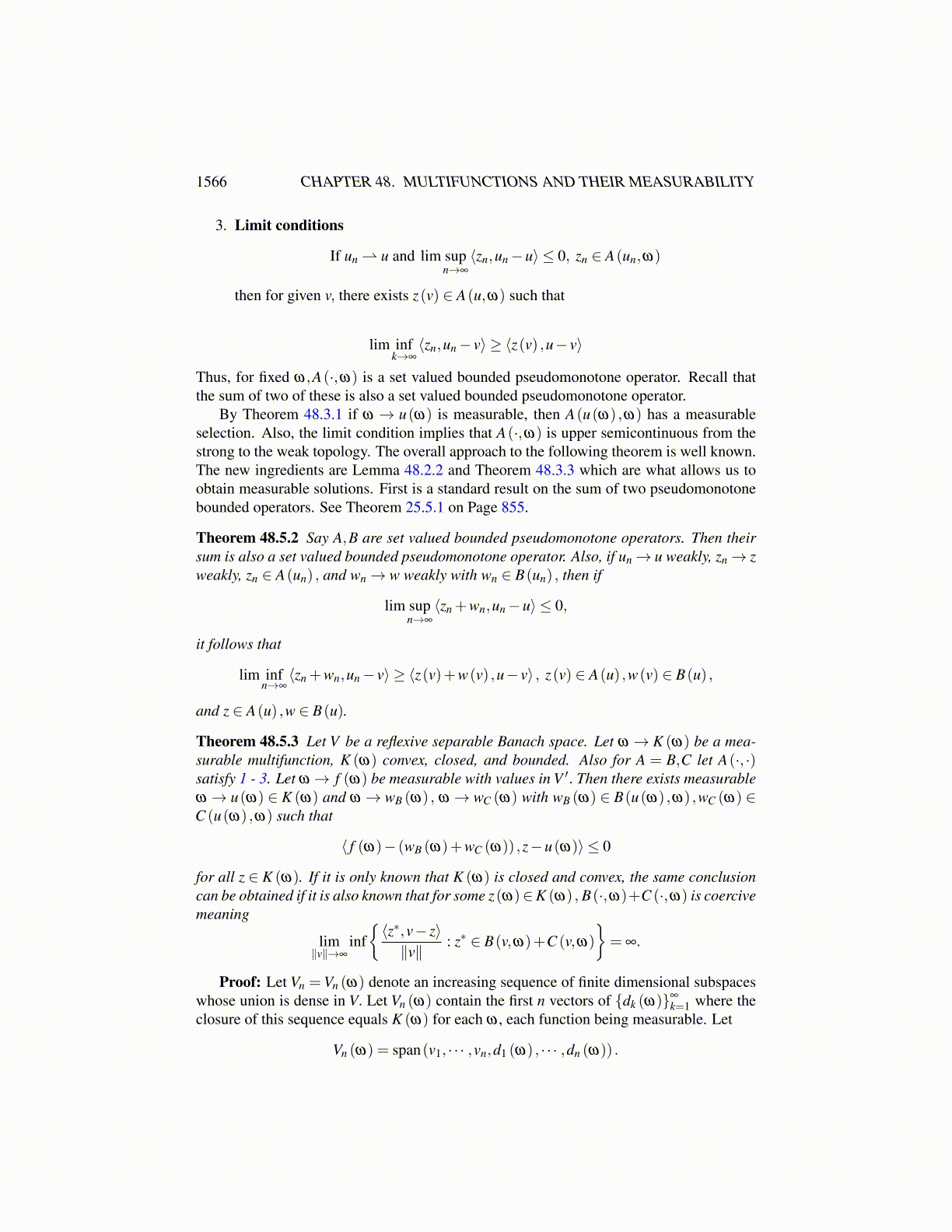
1566 CHAPTER 48. MULTIFUNCTIONS AND THEIR MEASURABILITY
Then since xε (ω) is contained in K (ω), a compact set, and the diameter of each sim-plex is less than 1, it follows that Aε
(xε
k (ω) ,ω)
is contained in
A(K (ω)+B(0,1),ω)
which is a compact set. Let Wε (ω) ∈ R2n+2n2be defined as follows.
Wε (ω) :=(
tε1 (ω) , · · · , tε
n (ω) ,xε0 (ω) , · · · ,xε
n (ω) ,xε (ω) ,Aε (xε
1 (ω) ,ω) · · ·Aεm (xεmn (ω) ,ω)
)Thus Wε has values in a compact subset of R2n+2n2
and is measurable. By Lemma 48.2.2there exists a subsequence ε (ω)→ 0 and a measurable function ω →W(ω) such that
Wε(ω) (ω)→W(ω) =
(t1 (ω) , · · · , tn (ω) ,x0 (ω) , · · · ,
xn (ω) ,x(ω) ,y1 (ω) , · · · ,yn (ω)
)as ε (ω)→ 0. Recall also that
Aε (xεk (ω) ,ω)⊆ A
(PK(ω)xε
k ,ω)
Now ∣∣PK(ω)xεk (ω)−xε (ω)
∣∣= ∣∣PK(ω)xεk (ω)−PK(ω)xε (ω)
∣∣≤ |xεk −xε |< ε
Both xε(ω)k (ω) and xε(ω) (ω) converge to x(ω) and so the above shows that also,
PK(ω)xεk (ω)→ x(ω)
Therefore,Aε(ω)
(xε(ω)
k (ω) ,ω)⊆ A(x(ω) ,ω)+B(0,r)
whenever ε (ω) is small enough. Since A(x(ω) ,ω) is closed, this implies
yk (ω) ∈ A(x(ω) ,ω) .
Since A(x(ω) ,ω) is convex,
n
∑k=1
tk (ω)yk (ω) ∈ A(x(ω) ,ω) .
Also, from the construction,
xε (ω) = Aε (xε (ω) ,ω)≡n
∑k=0
tεk (ω)Aε (xε
k (ω) ,ω)
so passing to the limit as ε (ω)→ 0, we get
x(ω) =n
∑k=0
tk (ω)yk (ω) ∈ A(x(ω) ,ω)
and this is the measurable fixed point.